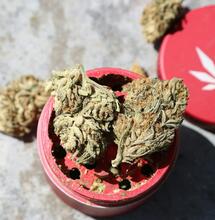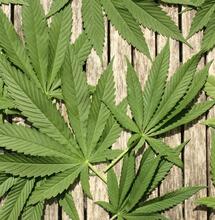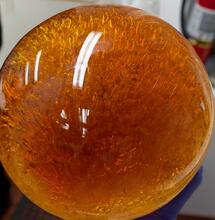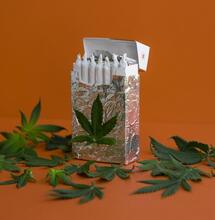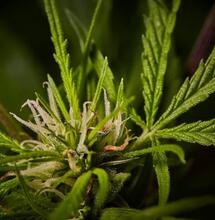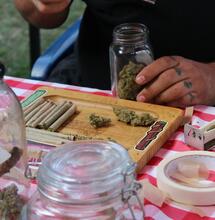Lab Testing Cannabis for Quality and Safety

Lab testing cannabis is supposed to guarantee that the product is free of any harmful compounds, and can be safely used by consumers. In most legal places, testing is indeed mandatory. Growers and manufacturers must ensure their cannabis products align with state or regional safety standards. However, is enough done to get high-quality and safe cannabis products in legal dispensaries?
Lab Testing Cannabis: What is Checked?
Testing requirements can vary depending on state, but here’s what most often gets checked in labs.
- Product potency. Tests determine how much THC is in a flower or other infused products. CBD and minor cannabinoids are also measured.
- Presence of contaminants. Cannabis can get contaminated during cultivation, in factories or while transporting. Tests should verify that the cannabis product is free of any pesticides, heavy metals, residual solvents, bacteria, fungi, etc.
- Terpene profiling. Checkups can additionally determine the amount of terpenes or the aromatic compounds present in the product.
Does Standard Testing Ensure Quality and Safety of Cannabis Products?
Lab testing is supposed to prevent any contaminated cannabis entering legal dispensaries. While it is what gives consumer protection, there are a few challenges that need to be addressed, as listed below.
Lack of standardization
There’s a lack of standardized testing methods, which may lead to discrepancies between what we get as results from different labs.
High costs for testing
Full-scale cannabis product testing costs money. It can be a financial burden for smaller producers who are already outcompeted by multi-state operators, especially in the big cities.
False lab results
Tempered lab test results was nothing short of a scandal last year in the industry. Some weed labs had their work licenses revoked because of this. However, that might be only one part of the problem. When companies have a bad batch of weed, some of them look for ways to cheat, such as by sending tampered samples to the lab and getting results that work for them.
New contaminants and diseases
As cultivation and extraction methods evolve, new contaminants may appear. Or it could be new diseases. For example, Fusarium Head Blight has become more prevalent in hemp cultivars in the last few years. The problem is again two-sided here. Regulation always lags behind to upgrade testing for new contaminants. Science always needs more time to determine best practices on how to deal with or entirely prevent contamination from a new potential source.
So, how should the quality and safety of cannabis products be best ensured? It is crucial to address the above challenges by improving regulation and adjusting fair policies for all businesses. While that would be on the part of industry control, a responsibility also falls on the part of consumers, who should be able to recognize when a product is not okay by looking at the label and package. For flower, you should also know the signs of good and bad buds.
What is Supposed to Be on a Marijuana Label?
Below are some of the common requirements that assure quality and safety of cannabis products, which is good to be noticed by users when buying cannabis products. What appears on cannabis packaging might change depending on the jurisdiction. You can check here state-specific guidelines regarding cannabis packaging and labeling requirements.
Identity statement
The front panel of most cannabis product labels should sport a brand logo and statement of identity. The brand logo and accompanying info tells the customer about the company and its product. It should be clear from this info whether you’re buying THC-infused pre-roll, CBD topical product, CBD tea, or you name it.
Net contents and weight
The front panel should additionally display the product’s Net Weight by using both metric and U.S. Customary System units. In other words, Net Weight should be shown in grams/mililiters as well as in ounces/pounds. It should also say about the amount of active compounds in milligrams per serving or per package. The Net Weight is usually positioned near the bottom of the front panel, parallel to the base of the package.
Child-proof packaging
Most states require that cannabis products - especially those that might be found attractive by children, like gummies and candy - must be in an opaque, resealable and child-resistant packing. Additional advice may be given to keep the product away from children and pets.
Supplements and nutrition facts
If the product is intended for ingestion or drinking it should say so in a separate facts panel. The manufacturer should include information such as serving size and daily value percentage (%DV). This is usually laid out in an easy-to-read section, placed right next to the statement of identity.
Products May Contain Additional Warnings
Different states require different warnings on cannabis labels. Take a note of the following warnings, some of which are exclusive to medical cannabis labels.
- The product is a Schedule I Controlled Substance
- For medicinal products it should say: For medical use only. For use only by the qualifying patient.
- For use by adults 21 and older (unless the person is a qualifying patient).
- Keep out of children’s reach.
- The product may impair a person’s ability to operate a vehicle or heavy machinery. It may affect the person’s coordination, concentration and judgement.
- Cannabis is not advised to use while pregnant or breastfeeding.
- Cannabis causes intoxication and can be habit-forming and addictive.
- Allergen warnings on edible products (Milk, Eggs, Tree Nuts, Wheats, Peanuts, etc.)
- Proposition 65 warning if the product is sold in California.
Regulators helping to overcome challenges around lab testing and users being well-clued about what they see on a label should help ensure more safety and quality among products on the cannabis market. And if you still worry about what goes into your weed, you can always try and grow your own. With the right set of skills and knowledge, growing for personal use can work as the best way on how to get high-grade weed to medicate with.
Also read on Soft Secrets:
